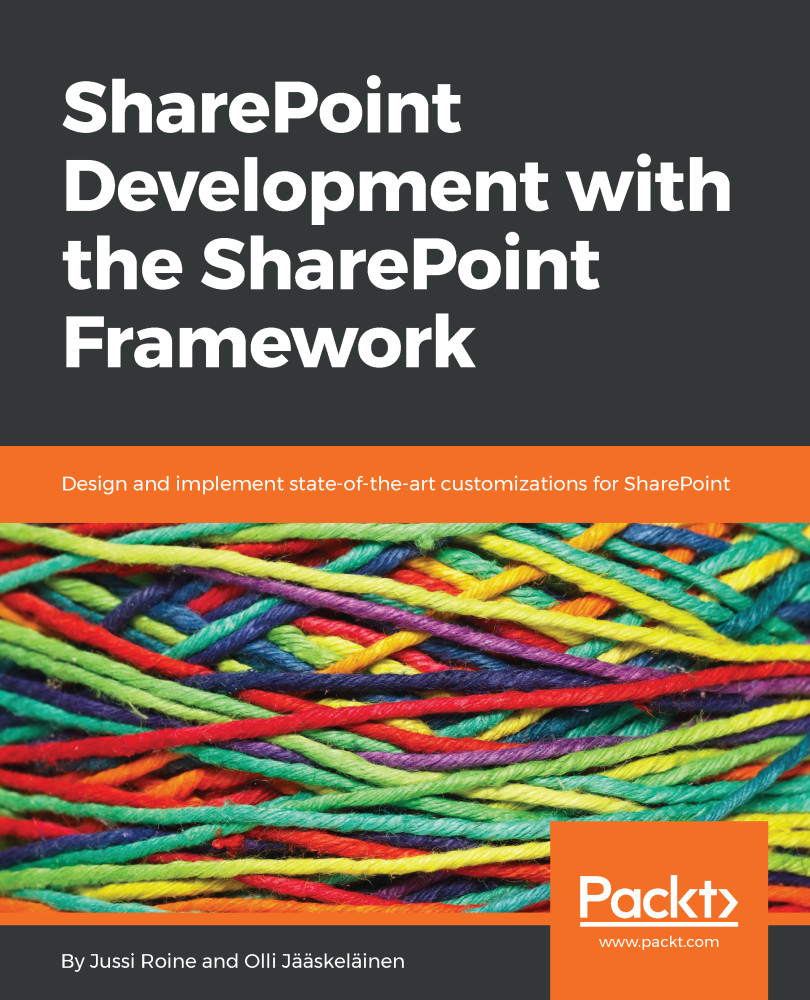Developers need APIs in order to successfully integrate their solutions with other workloads and services. SharePoint Online exposes a good set of APIs, which we'll introduce in this chapter. In later chapters we'll walk through how to best employ the APIs, including authentication and authorization, as well as proper use cases for different kinds of APIs.
Currently, SharePoint Online exposes three types of APIs.
REST APIs, that can be found under the /_api/ URI, for example, https://{tenant}.sharepoint.com/_api/{commands}/{parameters}. This is the most common use case for accessing SharePoint Online structures, data, and information. A sample API call would be a call to the Lists API, which exposes all site lists. The URL for this would be https://{tenant}.sharepoint.com/_api/web/lists.
Note, that we need to first call /web/ underneath /_api/, in order to instruct the API to look at the current SharePoint site, and then call the Lists API:

The output, by default, is XML. This sample call exposes all SharePoint lists in the given SharePoint site.
In addition to REST APIs, SharePoint Online still exposes a smaller subset of SOAP Web Services. These Web Services are from the SharePoint 2007 era, but still, work and can sometimes turn out to be useful in specific situations where the REST APIs can't be used or where they might not provide the needed information. In truth, the SOAP Web Services are randomly used and not something SharePoint Online developers should resort to unless absolutely needed.
Last, but definitely not least, are the Microsoft Graph APIs or, more specifically, endpoints. As the name implies, these are not specific to SharePoint Online but more of an overall collection of APIs that Microsoft Graph provides.


